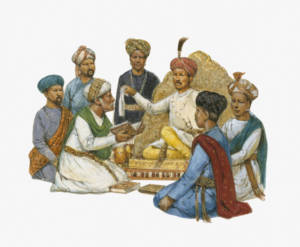
Some evidence suggests that the “end times” ideas in the three Abrahamic religions may have been influenced by an older system of thought: Zoroastrianism.
Although most individuals tend to think of religious doomsday-style predictions within a Christian context, you might be surprised to know that “the end of the world as we know it” doesn’t just exist in Christianity. Islam also has an anti-Christ figure, and some Jewish writings reference a final “Day of the Lord” in which the wicked are punished. However, some evidence suggests that the “end times” ideas in these three Abrahamic religions may have been influenced by an older system of thought: Zoroastrianism.
Zoroastrian End Times Theology
The earliest manuscripts of Zoroastrianism’s chief apocalyptic text, the Zand-i Wahman Yasn, date to the early 15th century C.E. These writings describe several key events that the religion’s deity, Ahura Mazda, reveals to the prophet Zarathustra:
- A battle between good and evil
- The arrival of a savior figure known as the Saoshyant
- A resurrection of the dead
- The physical suffering of wicked people
- The righteous transformed into a divine, immortal state
- Humanity living as one under Ahura Mazda
Curiously, the state of the world prior to the Saoshyant’s arrival seems somewhat like what’s described in the Book of Revelation. Both writings describe worsening climate changes that lead to famine and nearly unlivable conditions on planet Earth. Also, each book insists that people’s deeds become increasingly wicked prior to good’s final showdown against evil.
Influences During the Babylonian Exile
If the Zand-i Wahman Yasn may have been written at least two millennia after Zarathustra’s lifetime, what are we to make of the possibility that “end times” concepts could have existed before the three main Abrahamic religions were even founded? To see the potential connections, it’s important to remember that Zarathustra himself lived and spread his teachings much earlier in human history. The Encyclopedia Britannica explains that most scholars place his existence before the 6th century B.C.E., and BBC Religions writer Joobin Bekhrad mentions that he was likely alive between 1500 and 1000 B.C.E.
Both the ancient Greeks and the Jewish people of the Babylonian exile would have been exposed to his philosophies during the 6th century B.C.E., thanks to the Persian conquests of ancient Israel, Judea and Greece. In fact, it was the Greeks who gave him the moniker “Zoroaster” and helped propagate his notion that good and evil coexist as opposing forces. Along with this key concept, many of his other ideologies were eventually adopted by the three Abrahamic religions:
- Monotheism, or the existence of only one god
- Humans being either righteous or wicked
- Two spiritual destinations in the afterlife, Heaven and Hell
- The existence of angels and demons
- An adversarial figure who opposes God
- A final judgment determining the fate of every human for all eternity
During their captivity in Babylon from 598 to 538 B.C.E., Jewish exiles would have read and heard Zarathustra’s teachings. These trickled into their theology and culture around the same time that they impacted Hellenistic philosophies. From there, they would have been passed down into Christianity through New Testament writers such as Saint Paul and John of Patmos, who themselves may have also been influenced by Hellenistic ideas. Eventually, Islam would have inherited these same ideas, drawing from a similar ideological pool.
Its Eschatological Legacy Continues Today
Statistics Canada estimates there are only around 5,000 Zoroastrians in our country, and one of its last famous adherents, Freddie Mercury, died in 1991. Yet when we talk about the “end of the world” or fear Revelation-like conditions developing around us, we are rehashing ideas promoted by its ancient Iranian prophet over three thousand years ago. Its influences on religion and culture in the West are still apparent today thanks to his concepts leaking into the three major Abrahamic religions as well as Greek philosophies.



